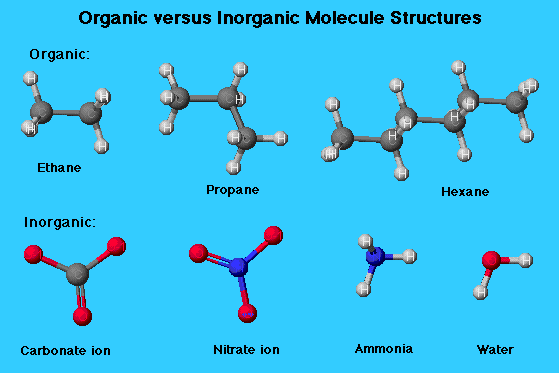
Staying on topic, here is the challenge of starting up your boiler this season: You need to fill it with water (assuming it is empty). The water needs to be pre-heated and relatively free of oxygen, carbon dioxide and hardness.
The Solution

Well, if you have DA tank, you are in luck! It turns out that a DA tank is the perfect place toget the water that feeds your boiler. DA stands for deaerator, which is fancy talk for ?take the dissolved air out of.?? In this case, it?s a vessel that pre-heats and takes the air out of water so it can be safely used in your boiler.
There are two ways to remove air from water (really it?s the oxygen that we are most concerned about? well, carbon dioxide too, but that?s another post). Those two ways are:
With chemicals (like sulfite or hydrazine)
With heat (like boiling water)
Usually a good steam boiler operation system employs a combination of both methods. Either way, the party happens at the DA tank. The DA tank is usually an enclosed tube-like vessel that use heat and pressure to remove dissolved gases from water. This is often the location where your water treatment company may inject sulfite, an oxygen scavenger, to get any remaining oxygen that the DA tank misses. (Although, some top water treatment companies still believe that direct injecting an oxygen scavenger directly into the boiler right above the water line is still the best location. We say: Why scavenge oxygen in the boiler if you can get it out before that? Either way, choosing the most appropriate water treatment chemicals for your DA tank should be left to experienced water treatment professionals.) Once the water leaves the DA tank it should be 99% free of dissolved oxygen and, therefore, perfect for using to create steam in your boiler with less corrosion to the tubes and vessel.
Want to see a cool video that shows the inside of a deaerator? Because it just so happens that Stork, a Netherlands-based manufacturer of industrial process equipment, posted a great one to YouTube:
What do you do if there is already water in your cold boiler?
As a busy water treatment company in New York City and the east coast, we help perform and monitor a lot of end-of-season boiler layups. Facilities that operate a seasonal boiler, typically layup their boiler at the end of the heating season in using one of two general methods: Either a ?wet?? layup or a ?dry?? layup. In the case of a properly conducted wet layup, the boiler is never fully drained and contains water that is both high in sulfite (to remove the oxygen), high in alkalinity (to minimize corrosion) and most likely cool depending on the ambient temperature and the quality of the insulation around the boiler. In this case, your goal is to gradually heat the water in the boiler, and incrementally replace it with newly treated, pre-heated water from the DA system. Here?s why: Making steam with water that is already high in dissolved solids will cause ?carry over.?? Meaning the steam will carry some of those solids into the rest of the piping system once it leaves the boiler. This can cause all kinds of unhappy issues down the line, including deposition and corrosion. You want to bring the layup water up to temperature and flush it out with pre-heated water from the DA.
So, what do you do if you do not have a DA tank?
The best answer is start saving your money, because you?re either going to want to buy one or you?re going to need it to repair to replace your boiler at some point. However, we understand that employing best practices isn?t always easy?
So for those of you that are in a bind, we suggest this:
Make sure you are using softened water.
Pump at least 100ppm of sulfite (oxygen scavenger) into your boiler.
Bring the boiler up to operating temperate very slowly.
Open the vent of the boiler and let the oxygen off-gas as it comes to a boil. (Remember, the less pressure at this point, the better.)
Send the first batches of condensate return to sewer. (They will most likely be high in iron and you do not want the iron returning to the boiler.)
This method is NOT the best way to do things. You should have and utilize a DA tank. However, it is better than filling your boiler with cold water, firing it up and walking away. If you do not operate your boiler system with a DA tank, we recommendation that you invite a few reputable mechanical services companies to give you some quotes on installing one into your steam system so you can start working on a capital improvement budget for this project.
Is there anything else I need to know?
Yes! There are a ton of things you need to know! But for now we?ll give you just one more tip?
One of the biggest mistakes that we see operations staff make is bypassing the DA and/or the water softener in order to get their boilers filled quickly. Even in NYC, where the water is generally soft, this is a HUGE mistake. Yes, you are sending dissolved oxygen to the boiler, but you are also sending some quantity of hardness. Any hardness in a boiler is BAD. Hardness and heat will cause your boiler to scale up.
Also, when alkalinity enters a boiler, it breaks down into carbon dioxide which is released by the steam. Carbon dioxide forms acidic carbonic acid in condensate returns resulting in pH levels usually below 6.0. That’s not good for black pipe. So if your makeup water is high in alkalinity, your steam boiler system may benefit from a dealkalizer.
So make sure your boiler lives a long and healthy life. Take your time and come up with a plan for your boiler start up this year. Consult with your water treatment company and do it the right way.
If you need any specific advice, we are always available to help. Please do not hesitate to contact us directly. Or if you enjoyed this post and would like to learn more do?s and don?ts about your boiler system, please use the following link to download our eBook “10 Huge Mistakes Facilities Make in Boiler Operation and How to Avoid Them!” It’s our gift to you for making through these posts! Thanks for reading!
Greg Frazier is an expert in Industrial Water Treatment and is currently the Managing Partner of Clarity Water Technologies. He has over 18 years of Industrial Water Treatment experience and holds a degree in Chemical Engineering from the University of Tennessee.


Comentarios recientes